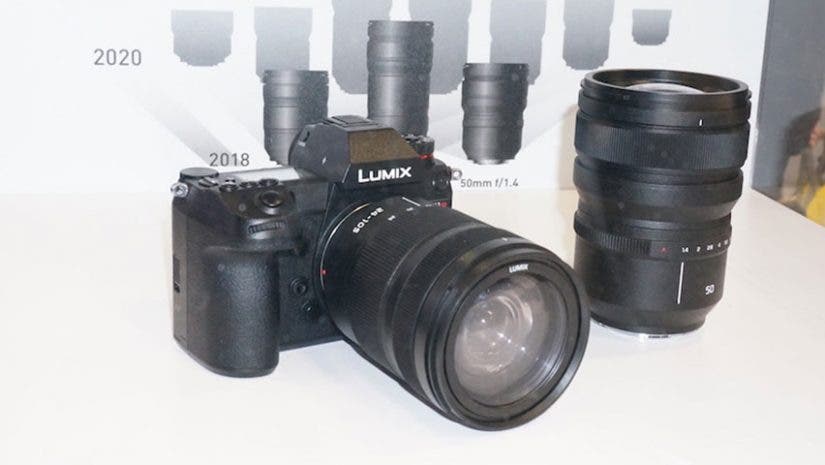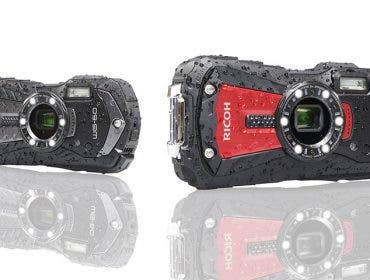The opening of the big Photo Plus 2018 Expo on October 25th at the Javits Center in New York City drew enthusiastic crowds of professional photographers, photo enthusiasts, and the typical assortment of journalists, analysts, and industry mavens. Most of the major players were there in force, including Nikon, Canon, Sony, Fujifim, Panasonic, Olympus, Pentax, Ricoh, and more, with the notable exception of Leica that held an event heralding their new minimalist Leica M10-D (which has no LCD, but does have built-in Wi-Fi!) at their Soho store.
Prominent lens company booths included Sigma, Tamron, Tokina, and Zeiss (and several other brands) were there with the expected profusion of accessories, hardware, software, media, and services. They managed to squeeze everything, including many impressively large booths, into one cavernous ground floor space, which made it slightly easier to cover the show.
For all the high spirits and genuine enthusiasm for photography in evidence at PhotoPlus 2018, the the show did not have as many new product announcements, when compared to the giant Photokina 2018 expo held in Germany earlier this fall. On the plus side, many folks finally got to handle the exciting new full-frame mirrorless cameras from Nikon (the Z6 and Z7) and Canon (the EOS R) they’d fantasized about, and many major camera companies (including Nikon, Canon, and Fujifilm) offered free professional in-booth cleaning services for their cameras. Also there were a number of significant trends in evidence, and enough really new stuff to keep things pretty interesting. Here’s a brief rundown of what we encountered as we strolled the aisles.
Look but don’t touch: Enticing cameras and lenses under glass
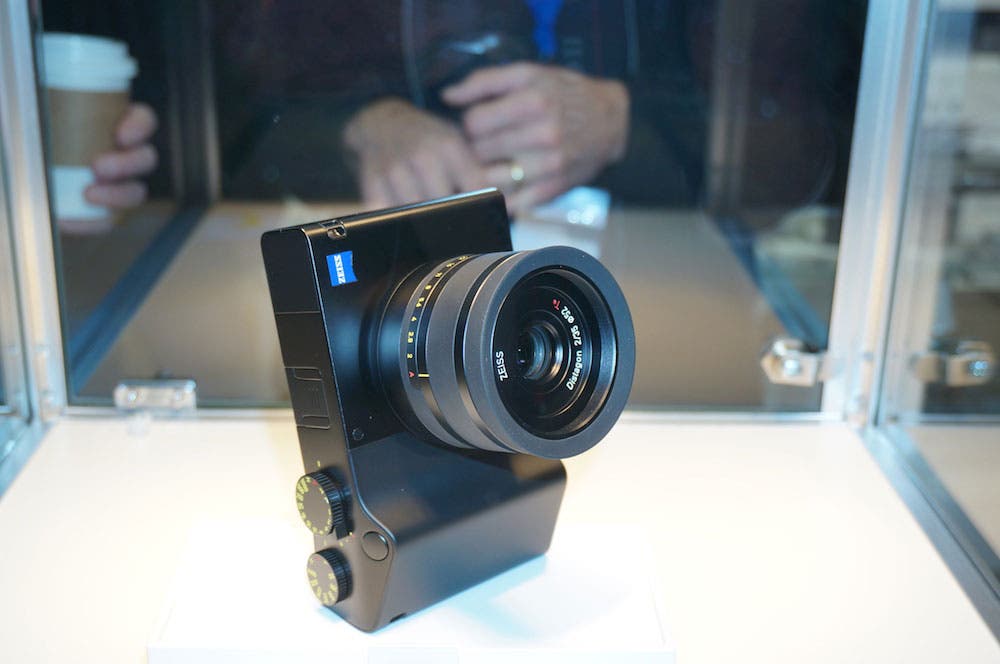
At the Zeiss booth we ogled longingly at the ZX1 previously unveiled, albeit with fewer details, at Photokina. A masterpiece of minimalist design, it has a Zeiss-designed full-frame 37.4MP sensor, a non-interchangeable 35mm f/2 Zeiss Distagon lens, a 0.74x OLED EVF, and a giant 4.34-inch Touchscreen LCD with a Tool Bar in its attractively curved right-hand end. Remarkably, the ZX1 does not use memory cards — it has internal 512GB SSD storage and integrated Adobe Photoshop Lightroom CC, Wi-Fi, and Bluetooth. Is the world ready for a $4k fixed-lens camera? Zeiss is banking on its appeal to well-heeled street shooters and pro travel photographers.
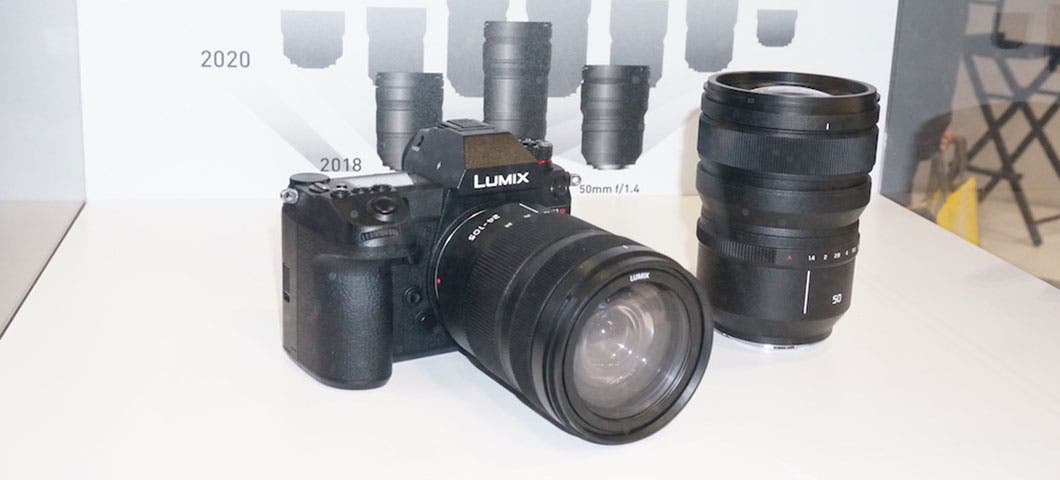
Panasonic announced the forthcoming S1R and S1 full-frame mirrorless cameras just last month, but details on what we saw encased in glass at the show are still pretty sparse. The S1R and S1 will have 47MP and 24MP sensors respectively, both will be able to shoot 4K video at 60 fps, provide Dual IS image stabilization, have double XQD memory card slots, and employ the L-mount pioneered by Leica and now embraced by Panasonic and Sigma, ensuring an enhanced supply of affordable and “expressive” interchangeable lenses.
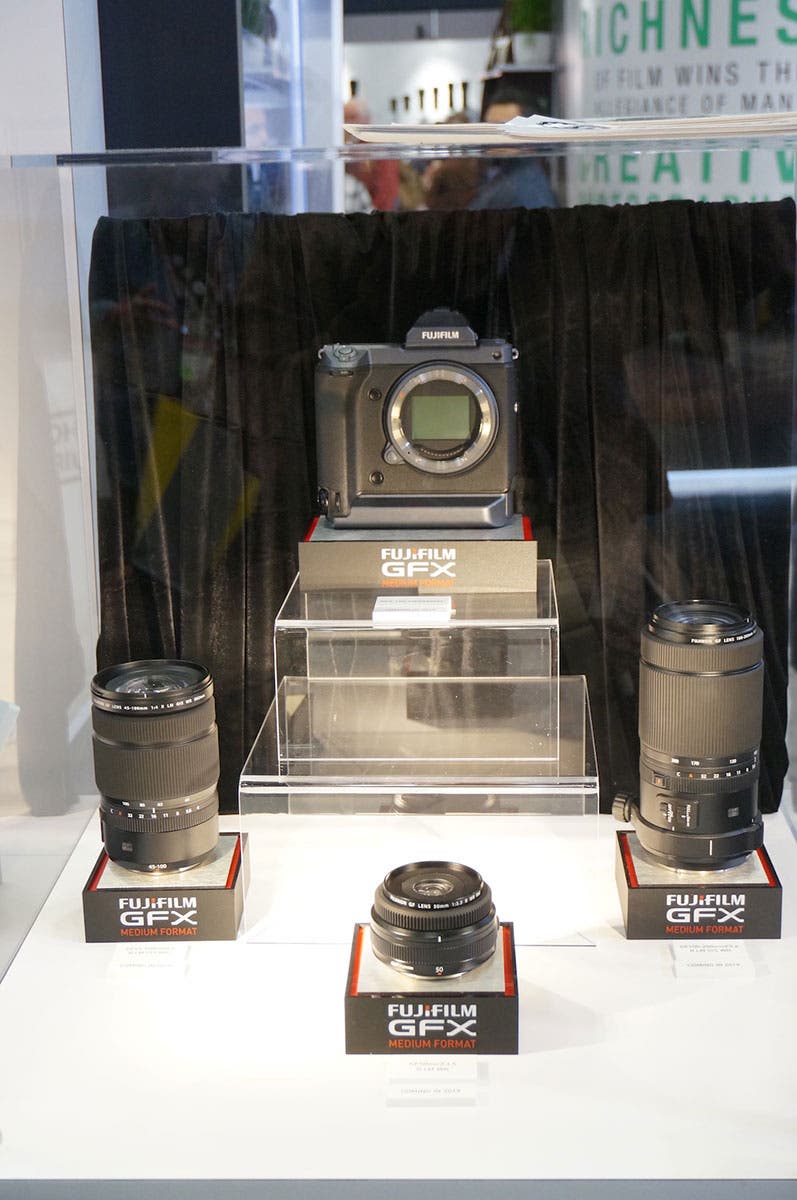
Fujifilm’s new “rangefinder style” medium format GFX 50R was also enticingly on display in a locked showcase. Resembling an upsized X-E3, it’s a lighter, handier version of the acclaimed GFX that employs the same basic internals, including a 43.8 x 32mm, 51.4MP sensor, a 3.2-inch touchscreen LCD, and an X Processor Pro. It has a smaller (but still 0.77x) 3.69M-dot EVF, and is the first GFX with Bluetooth.
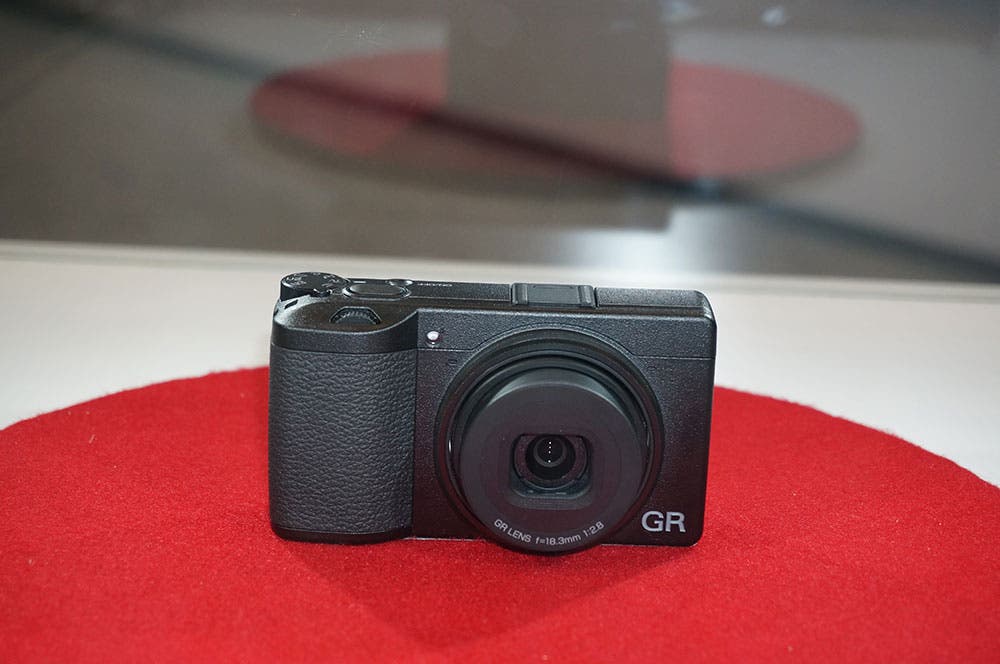
Ricoh also joined the under-glass movement with its enchanting GR III high-performance ultra-compact that features a new 24MP APS-C sensor, upgraded from 16MP, which should substantially improve its imaging performance. The new sensor also provides phase-detection autofocus, and in-camera stabilization. On the front of the camera is a newly designed 18.3mm f/2.8 (28mm equivalent) lens with 6 elements arranged in 4 groups. Sounds like a winner to us.
Is super storage on the upsurge?
Sony created considerable buzz with its new Sony SF-G Tough Series SDXC memory cards that feature a one-piece molded construction that is rib-less and eliminates the write protect switch that can be a source of physical damage. The rugged cards can be immersed in water 5 meters deep for up to 72 hours, are bend-proof, static-proof, freeze-proof down to 13 degrees F, and said to be 18 times stronger than conventional media. Performance is impressive as well: read speeds of up to 300MB/sec, and write speeds up to 299MB/sec earning a V90 speed rating. They’re available in 32GB, 64GB and 128GB capacities.
SanDisk announced a range of solid state drives (SSDs) that offer a much higher level of security than drives using mechanical components. The most interesting one is the SanDisk 2TB Extreme Portable, which is a USB 3.1Type-C External SSD with read speeds up to 500MB/sec that’s highly resistant to dust, water, and shock, and can be stored at temperatures ranging from -4 to 158 degrees F. It’s formatted in exFAT for Window and Mac and provides 128-bit AES encryption.
Lexar is also getting on the rugged SSD bandwagon with the Lexar SL100 Portable Solid State Drive that’s offered in 512MB capacity, provides transfer speeds up to 550MB/sec and write speeds up to 400MB/sec. Finished in brushed aluminum, it’s drop-, shock-, and vibration-resistant, bus-powered, provides EncryptStick Lite Security Software, and is Mac and Windows compatible.
New lenses in the hand
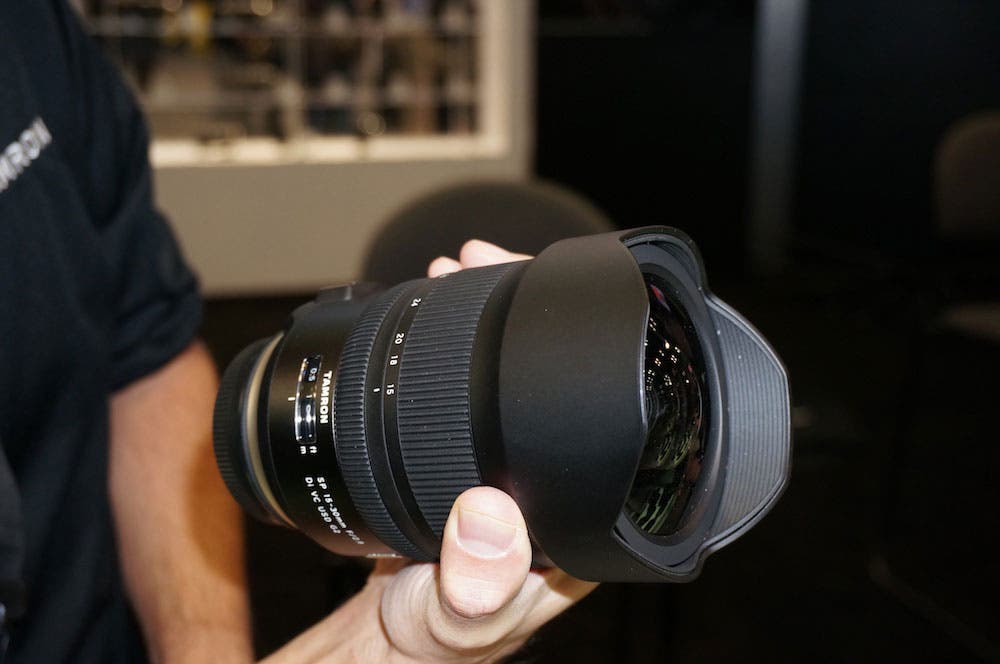
Some of the following optics were previously revealed, but all were new at Photo Plus, and we actually got to handle them for the first time.
Sigma showed 3 new high-speed-prime cine lenses, the 28mm T1.5 FF, 40mm T/1.5 FF, and 105mm T/1.5 FF, rounding out a line that now includes 10 lenses ranging from 14mm to 135mm. All these high-performance cine lenses are exquisitely hand assembled and finished. We also got to handle the new Sigma 28mm f/1.4 and 40mm f/1.4 DG HSM Art lenses which are said to be corrected to cinematic standards using exotic glass formulation, and delivering extremely high mage quality along beautiful bokeh, which is enhanced by rounded 9-bladed diaphragms.
Tamron showed the latest high-performance wide angle zoom at their booth and it’s a beauty (see it in the image above). The new full-frame Tamron 15-30mm f/2.8 Di VC USD G2 uses 3 LD and 3 Aspheric elements to achieve outstanding correction, employs a high-performance USD AF motor, has built-in VS image stabilization, moisture-resistant construction, and a rounded 9-bladed diaphragm to enhance bokeh. It’s surprisingly light and very well balanced on-camera.
Sony was understandably upbeat about its new high-performance Sony FE 24mm f/1.4 GM lens in its acclaimed G-Master pro series. On display for the first time in the U.S., this E-mount full-frame, internal-focus lens uses 2 XA and 3 ED elements to achieve an extremely high level of correction, and has a focus hold button, an aperture de-click switch for silent f-stop changes when shooting video, moisture resistant construction, and a rounded 11-bladed diaphragm to enhance its inherently attractive bokeh.
Lucie Technical Awards winners announced
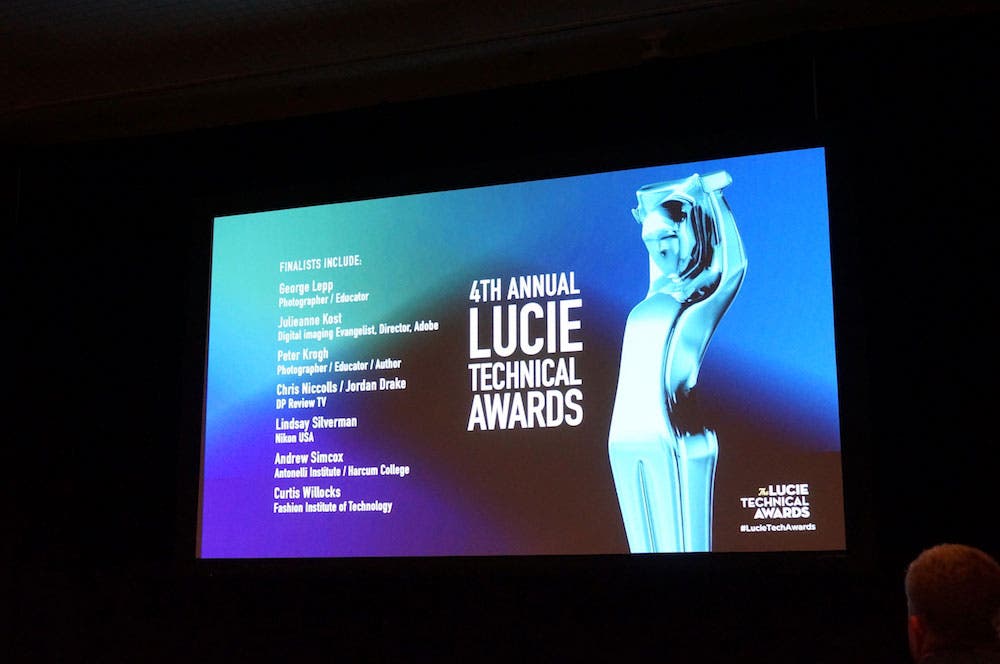
Lucie Foundation’s mission is to honor master photographers, discover and cultivate emerging talent, and promote the appreciation of photography worldwide. It was in that spirit that they held the 4th annual Lucie Technical Awards event announcing and honoring the 2018 winners at PhotoPlus. The event is sponsored by the Imaging Alliance, an organization representing all participants in the imaging community.
“This evening we announced the 28 winners of the coveted Lucie Technical Awards from a roster of 152 finalists representing 64 individual companies,” said Hossein Farmani, founder of The Lucie Technical Awards. “Our jury of experts chose these winners as the most innovative additions to the photographic world’s toolbox.”
“It is our privilege to honor these technological and creative forces who add so much to the creative endeavors of those in the photographic field,” added Lauren Wendle, President Lucie Foundation. “The Lucie Foundation congratulates all of the nominees, and tonight, the winners of the 4th Annual Lucie Technical Awards.”
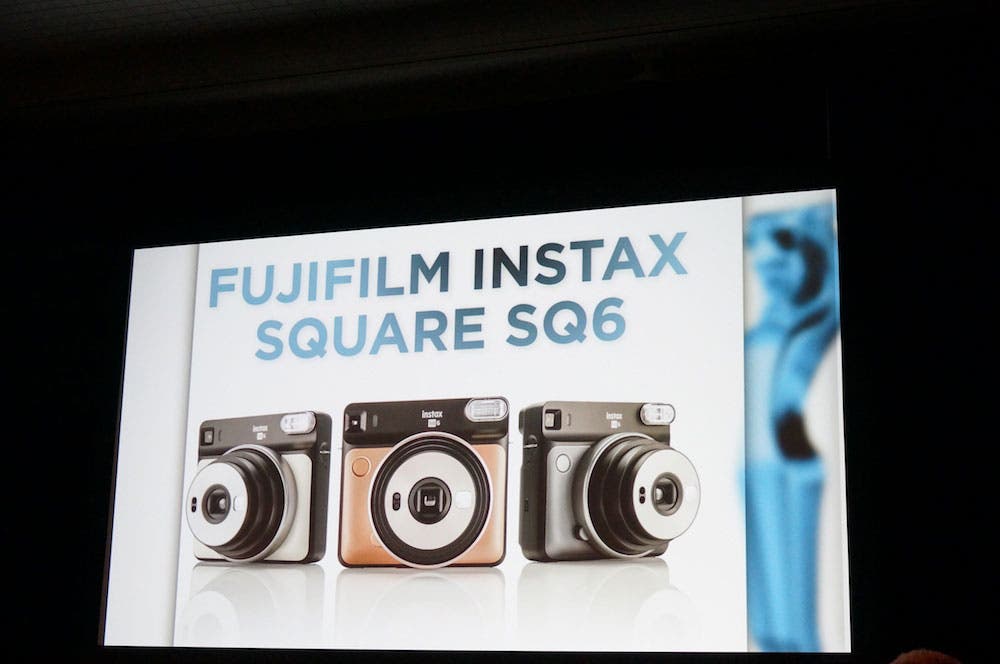
Here, by category, are the 2018 Lucie Technical Award winners:
- Best 360 camera: Insta360 Pro 2
- Best action camera: GoPro Hero
- Best camera drone: DJI Mavic2pro
- Best fixed-lens camera: Sony RX100 VI
- Best instant camera: Fujifilm Instax Square SQ6
- Best small format system camera: Panasonic LUMIX G9 PRO
- Best full frame system camera: Sony a7 RIII
- Best medium format camera system: Phase One IQ4 150MP
- Best wide angle prime lens: Olympus M.Zuiko Digital ED 17mm F1.2 PRO
- Best standard prime lens: Rokinon SP50mm f/1.2
- Best telephoto prime lens: Canon EF 85 f/1.4 L
- Best wide angle zoom lens: Sigma 14-24mm F2.8 DG HSM Art
- Best medium range zoom lens: Tamron 28-75mm F/2.8 Di III RXD
- Best telephoto zoom lens: Nikon AF-S Nikkor 180-400mm F/4E TC1.4 FL ED VR
- Best special purpose lens: Sigma 70mm F2.8 DG Macro Art
- Best medium format lens: Hasselblad XCD 120mm f/3,5 Macro Lens
- Best camera bag: Vanguard ALTA Fly 55T Trolley Backpack
- Best speedlight: Profoto A1
- Best tripod: Manfrotto Befree Advanced Carbon Fiber Travel Tripod
- Best industrial design: Gitzo Fluid Gimbal Head
- Best continuous light source: Westcott Solix
- Best bicolor light source: Fotodiox Pro FACTOR Radius 3 – 3’x2′
- Best tricolor and light source: Luxli Cello
- Best light modifier: Westcott Rapid Box Switch System
- Best photo editing software: Adobe Lightroom CC
- Best software plugin: Excire Search Pro
- Best backup solution: SanDisk Extreme Portable SDSSDE60-1T00-G25
- Best memory card: ProGrade Digital CFast 2.0
In addition to all the product awards, a special award was given for the first time in honor of the late great Chuck Westfall, longtime Canon technical guru and guiding light and one of the most knowledgeable, empathetic, and compassionate people in the imaging industry. Chuck’s longtime friend and traveling companion Lou Desiderio delivered a heartfelt tribute before presenting the award to Julienne Kost.
- Chuck Westfall technical education award: Julieanne Kost, Digital Imaging Evangelist, Director, Adobe
